Gardens of Death and Other Horticultural Marvels!
Visions of plants.
Extraordinary flora and fauna abound in our round-up of the globe’s most unusual gardens, greenhouses and Arctic Doomsday seed vaults!
The Atlas Obscura recently organized a trip to the gnarled remains of the Jardin d’Agronomie Tropicale in Paris for Obscura Day 2011. The site boasts a beautiful and overgrown expanse of wild flora and fauna and an incredible history. Inspired by the beauty and backstory of the garden we have assembled a short list of some of the Atlas Obscura’s favorite unusual gardens from around the world.
.jpg)

Jardin d’Agronomie Tropicale - Paris, France (The Corpse Flower)
A garden turned zoo for native peoples.
.jpg)
photo by Invisible Paris
Established in 1899, the “Jardin d’Essai Colonial’s” original purpose was to cultivate plants that could take root and flourish in the far-reaches of the French colonial empire. The garden was divided into geograhically distinctive sections – Indochine, Congo, Tunisia, among others – based on where the plants were to be introduced.
However during the summer of 1907, a bizarre plan emerged – instead of exporting plants to the colonies, the French government began importing native people from its colonies and into the gardens.
Like a perverse precursor to Disney’s “It’s a Small World” ride, this human zoo became home to six mock villages where native peoples lived and worked for nearly 6-months. Nearly 2 million curious Parisians flocked to the garden to view their colonial subjects in their “typical” environments, view their architectural aesthetic and purchase indigenous goods and foodstuffs from them.

Photo by Invisible Paris
Today the garden is left as a ruin in what is now a hip quarter of Paris. Wandering the grounds and winding paths, the visitor will encounter crumbling buildings engulfed in ivy and greenhouses long decayed. All that remains of the native peoples habitation in the garden is a tattered Tunisian flag and the fading remains of the Chinese Gate. The fate the native peoples following the exhibition is unclear.
The garden is open daily and is free to enter.
~
The Eden Project - St. Austell, England
A collection of glowing biomes – the largest in the world.
.jpg)
Traveling through southwestern England you come across a strange sight. Two enormous hexagonally-patterned structures arc out of the rolling hills of the English countryside in marked contrast to the pastoral turned industrial landscape around them. Welcome to the Eden Project.
.jpg)
via Geograph.org
Comprised of two massive biomes, the Eden Project is home to over 1 million plant species, flowing streams and cascading waterfalls. Borne out of a dilapidated clay mine that, along with the nearby town St. Blazey, was slowly degrading into a visual and economic wasteland, the project has transformed St. Blazey into a mecca of botany and sustainability.
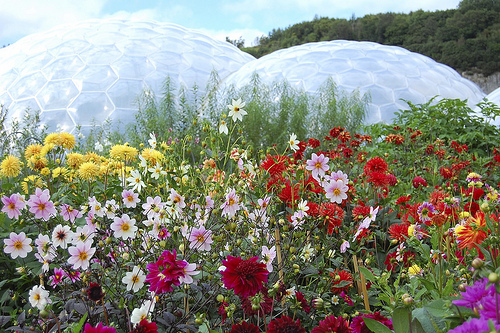
photo by Mark Higginson
Split into two greenhouses, one mediterranean, the other tropical, the tropical biome features rubber plants, bananas, and bamboo stalks towering above visitors, while the Mediterranean Biome boasts olive plants and grape vines. Visit the Core for an educational crash-course in improving human’s relationship with nature or stay until night to witness the biomes colorful futuristic glow.
~
Alnwick Poison Gardens - Alnwick, England
Under no circumstances, nibble the plants.
“These plants can kill.” These ominous words welcome visitors to the Alnwick Poison Gardens. The gardens were established on a small patch of a palatial estate in 2005 by the Duchess of Northumberland who’s affinity for the apothecary gardens of yesteryear inspired the collection of nearly 100 deadly and hallucinogenic plants. The Duchess is not the first royal to grow such a garden however. The nefarious Italian Medici family was infamous for its legendary poisonous botanical gardens, and for the sudden and mysterious death of their enemies.
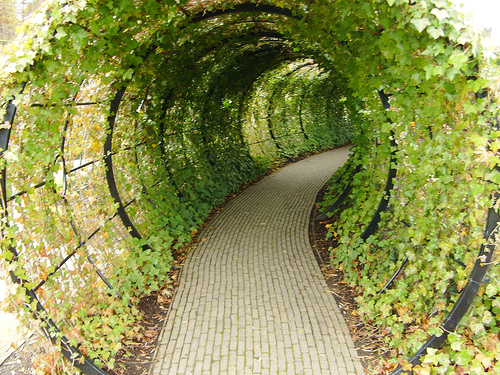
Deadly fauna can be viewed, some behind cages, on the modest swath of the castle’s grounds and some notably sinister flora including the Atropa belladonna (deadly nightshade), Strychnos nux-vomica (strychnine), and Conium maculatum (hemlock). Illicit delights can be found among the gardens as well, in the form of opium poppies, cannabis and magic mushrooms, though these are kept cordoned off. Tours can be arranged year-round.
.jpg)
image of Atropa belladona via Wikipedia.org
~
Garden of Cosmic Speculation - Dumfries, Scotland
Art and science collide on the grounds of the metaphysical Garden of Cosmic Speculation.
The imaginative vision of architectural theorist Charles Jencks and his late wife, Maggie Keswick, the Garden is a strikingly original vision, marrying physics and horticulture. Braided spiral sculptures represent the DNA helix, while oscillating collections of rhododendrons and angular mounds protrude from the Earth in a magificent display of mathematical theorems.
Meandering through the unorthodox landscape one can spot black holes, string theory, and the “Big Bang” inspiring the geometric compositions of the thirty-acre grounds. The Garden is only open to the public one day per year.
~
Lost Gardens of Heligan - Saint Austell, England
A lost Garden found again.
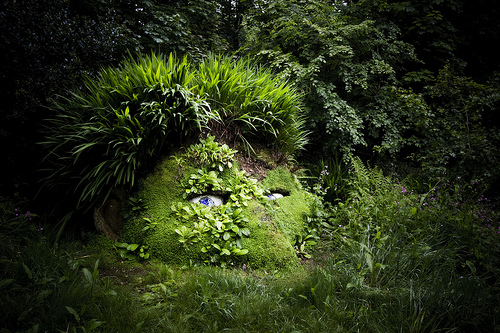
photo by left-hand
The notion of the “lost garden” has always been captivating, with its visions of prim gardens gone wild. Among the best is the Lost Gardens of Heligan which were in fact recently re-found.
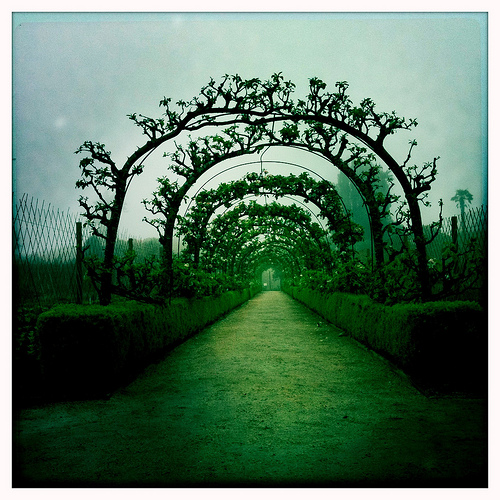
photo by j4mie
Established in the 1500s by the Tremayne family in Cornwall, the Lost Gardens of Heligan has evolved from one extravagant vision to the next as households passed the palatial estate from one generation to another.

photo by scotrail
During the course of the 19th century, as the gardens blossomed and thrived, an extensive staff maintained and enhanced them. But following World War I, when many of the highly skilled gardeners were sent to the front, never to return, the gardens vibrant past dwindled to an afterthought.
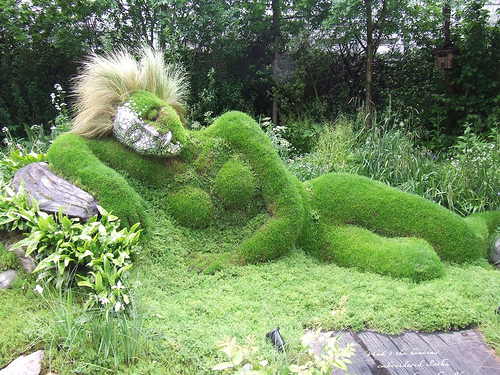
photo by Elfeda
75 years after their abandonment the gardens were rediscovered by a distant relative of the Tremayne estate. Eventually, Tim Smit, the very same architect who conceived the aforementioned Eden Project, undertook the opportunity to restore the lost garden.
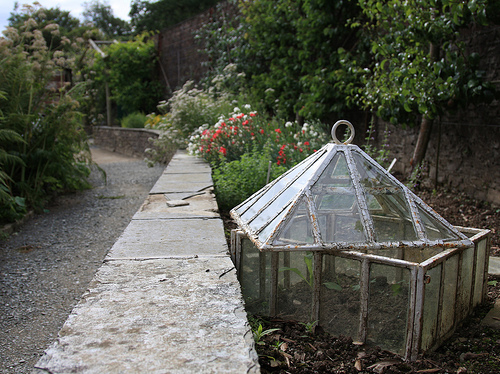
photo by Mat.Stace
Under his innovative and watchful eye, Smit re-imagined the Heligan Gardens, restoring them to their original size installing artistic pieces such as the Giant’s Head and the Mud Maid, a sleeping woman of the forest made out of wood, grass and earth.

photo by Cross Duck
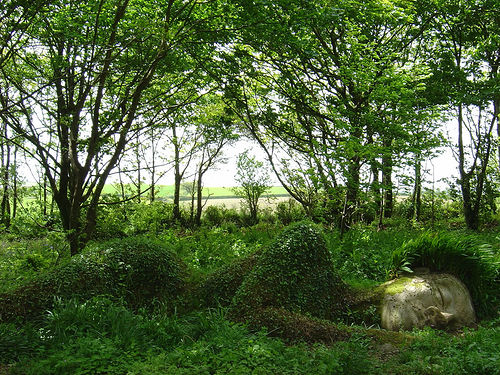
photo by Moochy
~
Svalbard Seed Bank - Svalbard Lufthavn, Norway
Doomsday vault safeguards botanical diversity for the next 20,000 years.
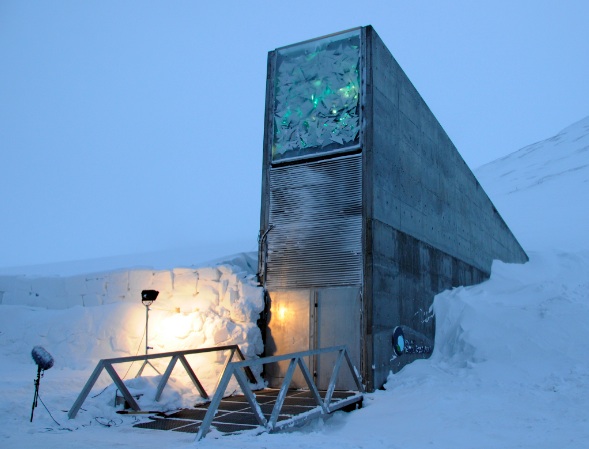
photo via Wikipedia.org
As much as the vegetable aisle in your local supermarket may look bountiful, it’s not. It is, in fact, a desert of biological diversity. The perception of choice clouds the reality that Western eaters consume a minuscule fraction of the possible fruits and vegetables that are out there. Enter, the Svalbard Seed Bank. Not a garden by any stretch, but in reality, probably the most important biological building on Earth.
Pushed by modern industrial agriculture’s need to create a reliable and repeatable product, much of modern produce has been narrowed into monoculture. Apples, potatoes and bananas are each represented by only the smallest sliver of their genetic diversity.
A consequence of this over time is the loss of seed variety and diversity. As a result, the Svalbard Seed Bank was set up as a safety net, a reserve of last resort that functions as a genetic safe-deposit box. Nuclear war and rising sea levels don’t stand a chance against Svalbard’s impermeable structure.
Duplicate specimens of seeds from around the world are stored there in an effort to safe-guard their genetics for future generations. With over 4.5 million seed samples stored at near freezing temperatures, the goal is to keep the seeds safe and sound for anywhere between 2,000 and 20,000 years.
~
Tell us about your favorite horticultural marvel. Are there any in your hometown?


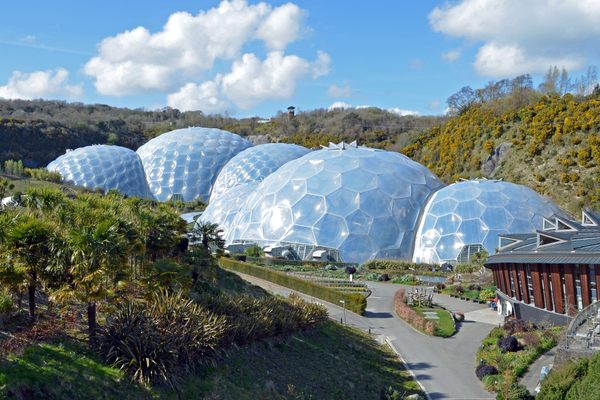



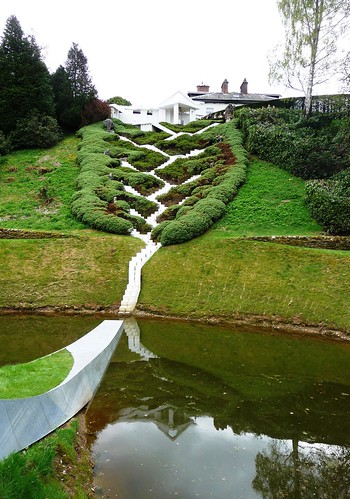

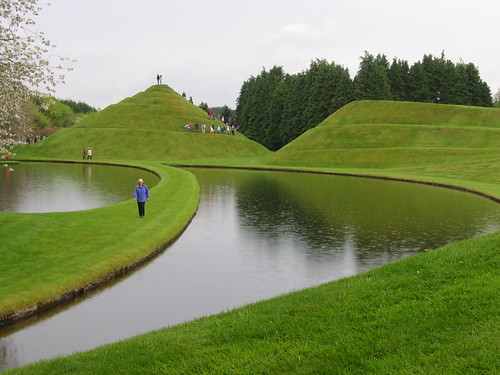






Follow us on Twitter to get the latest on the world's hidden wonders.
Like us on Facebook to get the latest on the world's hidden wonders.
Follow us on Twitter Like us on Facebook